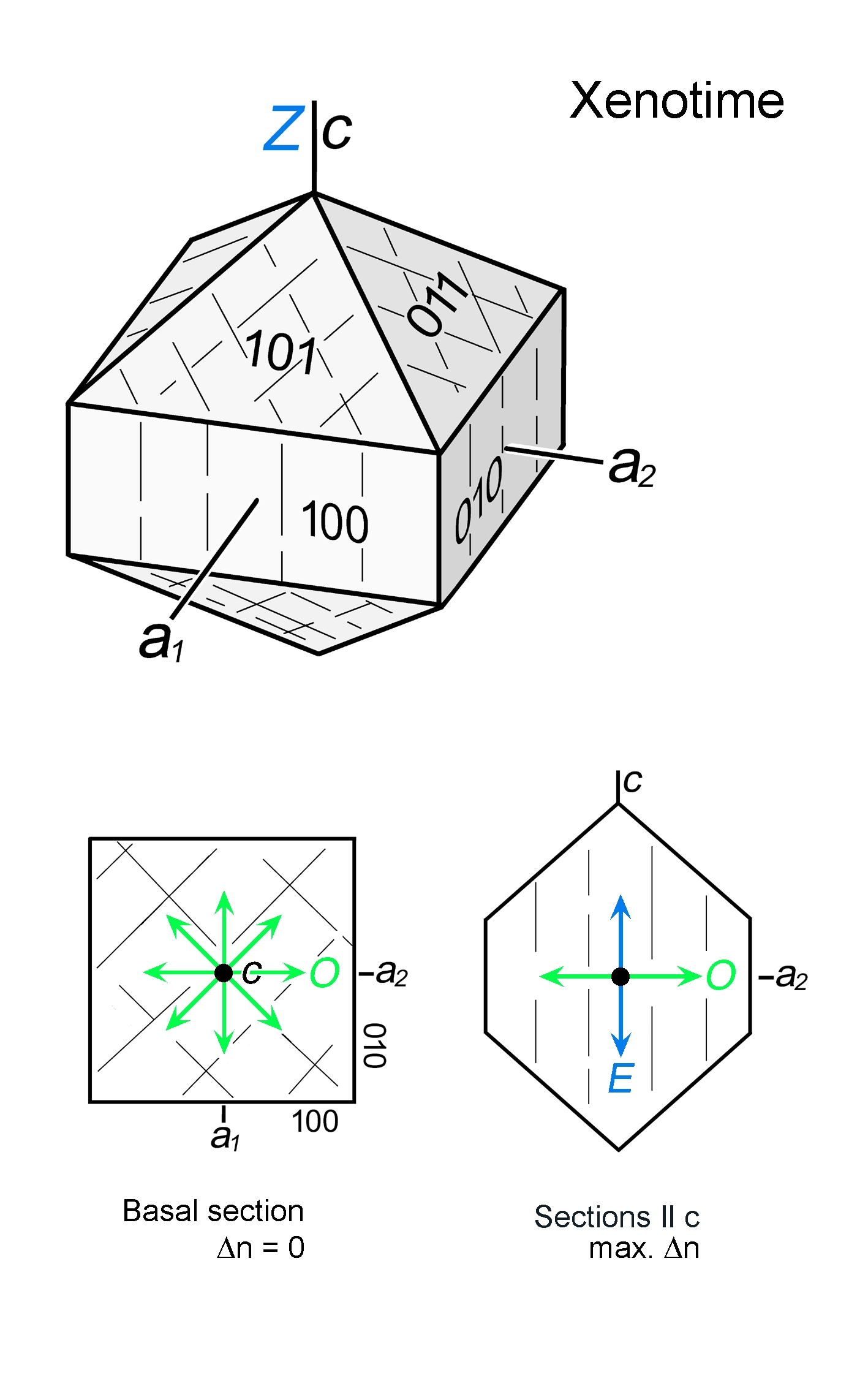|
| Formula | YPO4 |
| | Optic class & sign | Uniaxial positive |
| | Relief | High |
| | Refractive indices | no = 1.690 -1.724
|
|
ne = 1.760 -1.827
|
|
| |
| | Birefringence (max.) | 0.070 - 0.107 |
| | | |
| | Sign of elongation | Length-slow, l (+) |
| | Interference figure | Distinct isogyre cross and multiple isochromatic rings |
| | Colour / pleochroism | Colourless to pale yellow or pale brown; weak pleochroism E>O |
| | Zoning | |
|
|
| Form | Habit | Granular, stubby to elongate prismatic, less commonly as radial aggregates |
| | | Surface | Euhedral to anhedral |
| | Cleavage | 2 sets {110} at 90°, distinct |
| | Twinning | Rare; simple contact twins on {101} |
| | Extinction | Straight to prism faces and cleavage in sections ∥ c |
|
|
| Reaction textures | |
| | Alteration / decomposition | Stable |
|
|
| Occurence | Ign | Felsic rocks, granite pegmatites |
| | | Met | Gneisses and schists, magmatic- or sedimentary-derived; also in marble |
| | | Sed | Detrital in sands and sandstones |
| | | Hyd | Phosphate-REE-rich environments |
| | | Other | |
|
|
| Distinctive properties | High relief (similar to monazite, but lower than zircon), high interference colours (higher than monazite and zircon); commonly present in accessory amounts only |
| | Additional comments | Pleochroic halos in some ferro-magnesian minerals caused by α-radiation damage from radiogenic isotopes concentrated in xenotime |
|
|

 Images
Images 


 Images
Images 
